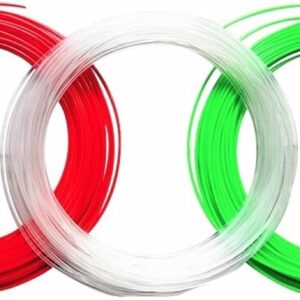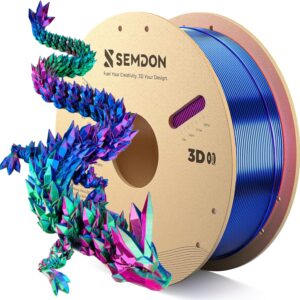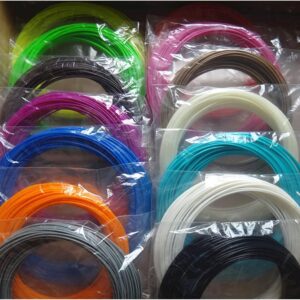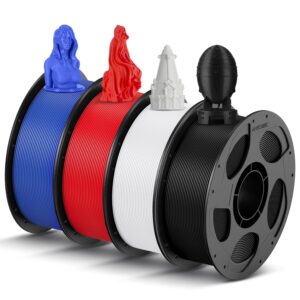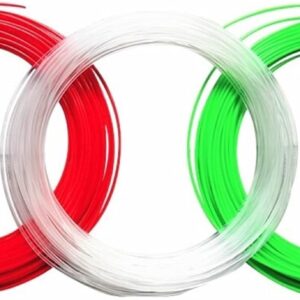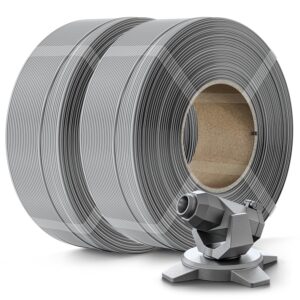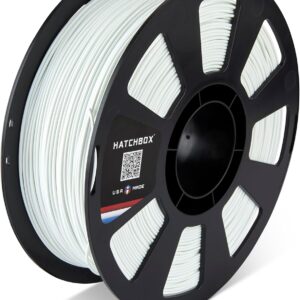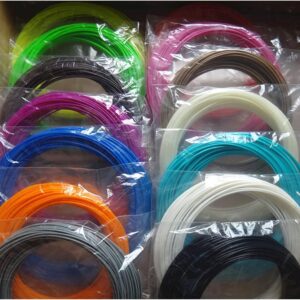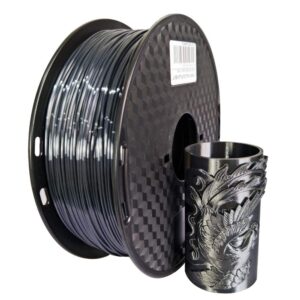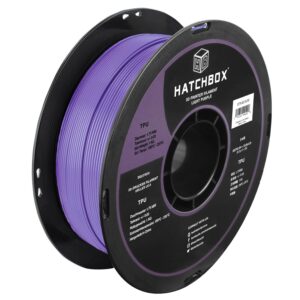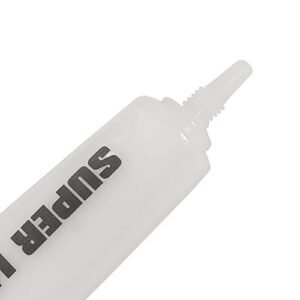Exploring the Vibrant World of PLA Filament Colors: Elevate Your 3D Printing Projects
In the ever-evolving realm of 3D printing, one element consistently remains pivotal: filament. Among the diverse array of materials available, polylactic acid (PLA) filament has emerged as a favorite, particularly for hobbyists, educators, and professionals alike. But what makes PLA the go-to choice? The answer lies in its versatility, ease of use, and, notably, its incredible spectrum of colors. In this article, we delve into the vibrant world of PLA filament colors and explore how they can enhance your 3D printing projects.
The Basics of PLA Filament
Before diving into colors, let’s briefly discuss why PLA is such a popular filament. Derived from renewable resources like corn starch or sugarcane, PLA is biodegradable, making it an eco-friendly choice. Its low melting temperature allows it to print easily on most 3D printers, and it’s compatible with a wide range of printing applications—from intricate designs to practical tools. Its popularity is not just due to its utility; it’s also about aesthetics, and this is where colors play a vital role.
A Spectrum of Possibilities
When it comes to PLA filament, the color palette can be mesmerizing. Ranging from bold and vibrant shades to soft pastels and intricate metallics, PLA filament offers an opportunity to express creativity like never before. Here are some categories that exemplify the richness of PLA colors:
-
Vibrant Hues: Bright reds, blues, yellows, and greens can bring your models to life. Imagine crafting a colorful toy for a child, where each color tells a story and evokes emotion.
-
Pastel Shades: Soft shades like baby pink and mint green are perfect for delicate designs. They work wonderfully for decorative items or educational models that don’t overwhelm the senses.
-
Metallic Finishes: For those looking to add a touch of sophistication, PLA comes in metallic finishes that mimic gold, silver, and bronze. This is ideal for awards, trophies, or jewelry where a reflective quality adds value.
-
Transparent and Translucent Options: The ability to print in clear or translucent colors allows for unique applications. These filaments are fantastic for creating lampshades or decorative items that play with light.
- Glow-in-the-Dark Filament: If you’re curious about integrating playful elements into your projects, consider glow-in-the-dark PLA. It’s perfect for children’s toys or spooky decorations!
The Importance of Color in 3D Printing
Choosing the right color for your project can significantly affect not just aesthetics but also the experience of interacting with the object. Color psychology implies that various colors evoke different feelings—green is often associated with tranquility, while red can stimulate excitement. The right hue can elevate the emotional connection users have with printed objects, thereby making them more effective as tools, decorations, or gifts.
Additionally, colors can offer functional benefits. For example, using bright colors for educational aids can engage learners more effectively, while contrasting colors in a prototype can highlight different functionalities or components.
Tips for Choosing the Right PLA Colors
To harness the power of color in your 3D printing projects, consider the following tips:
-
Understand Your Project Needs: Identify the intent behind your creation. Are you creating a toy, a prototype, or decor? This will guide your color selection.
-
Test Swatches: Since color can appear differently depending on the lighting and surrounding colors, print small swatches before committing to the final project.
-
Combine Colors: Don’t shy away from mixing colors. Many printers allow multi-color printing, so experiment with gradients or two-tone designs to create unique effects.
-
Brand Identity: If you’re creating for a business, consider your brand colors. This can increase brand recognition and consistency, making your prints more effective advertising tools.
- Customer Preferences: If you’re 3D printing for clients or the public, consider popular trends and colors. Keeping an eye on industry favorites can ensure your projects resonate with your target audience.
Elevating Your Projects with Texture and Finish
Color isn’t the only tool in your arsenal; different textures and finishes available in PLA can also play an important role. For example, matte filaments can add a touch of elegance, while glossy finishes can make objects look polished and professional. Combining colors and textures can further enhance your projects, creating multi-dimensional prints that grab attention.
Enjoying the Process
It’s essential to remember that experimentation is part of the fun when working with 3D printing. Trying various PLA colors—and mixing them—can lead to unexpected and delightful results. Don’t be afraid to make mistakes; your creative journey is just as important as the final product. The more you play with different colors, the better you’ll understand how they interact with each other and your printing technology.
Final Thoughts
The world of PLA filament colors opens up endless possibilities for creativity and innovation in 3D printing. By understanding the significance of colors and using them wisely in your projects, you can elevate not just the aesthetic appeal but also the functional quality of your prints. The vibrancy of color in your 3D creations will not only impress the eyes but also touch the hearts of those who use or admire them.
FAQs
1. What is PLA filament and why is it popular?
PLA (polylactic acid) filament is a biodegradable plastic derived from renewable resources. Its popularity stems from its ease of use, low melting temperature, and versatility in many applications.
2. What color options are available for PLA filament?
PLA filament comes in a wide array of colors, including vibrant hues, pastels, metallic finishes, transparent options, and even glow-in-the-dark variations.
3. How can I choose the right color for my 3D printing project?
Consider the purpose of the project and the emotions you wish to evoke. Test color swatches, consider brand identity, and keep customer preferences in mind for commercial projects.
4. Can I mix different colored PLAs in one print?
Yes! Many 3D printers support multi-channel printing, so you can combine different colors to create gradients or unique designs.
5. Will the color of PLA affect the strength of my printed object?
While color itself doesn’t directly affect strength, certain additives used in colored PLA may change the mechanical properties slightly. Always check the specifications from the manufacturer to ensure quality.
6. How can I ensure the best print quality when using colored PLA?
Make sure your printer is calibrated, choose the right print settings for the specific filament, and keep your nozzle clean to avoid color mixing errors.
In conclusion, embracing the vibrant world of PLA filament colors can transform your 3D printing projects. So get creative, experiment, and watch as your designs flourish with every hue you choose!
